Astilba is very valued by professional flowers and lovers for their magnificent and long flowering and unpretentiousness. Spacidious bushes look spectacular even when they do not bloom - juicy green leaves of beautiful shape will decorate any garden. In this article you will learn everything about how to grow an anstic on the site.
morphological characteristics
Astilba looks very original and rich, and during the flowering period transfigures the entire area. It is an ornamental plant with double- or trizhdyrassechennymi leaves dark green, located on the handle of red color.
Flowers give preference to the anstile not only because of her lush flowering, but also because it, unlike many other colors, is able to grow in a constant shade of trees, giving bright and colorful flowering. However, excessive blackout will not benefit even to her. Ideally, the flowers in the lace shadow should be planted.
Astilba is capable of steady to endure the harsh Russian winter, it is practically not subject to diseases, and even most insect pests bypass it. The perfect option for a novice gardener.
Astilba is a perennial plant, whose homeland is considered Japan and Asia. Most 200 varieties are known, each of which is characterized by dimensions, blossoms of flowering and coloring flowers. It can vary from 15 cm (grade Liliput) to 150 cm (rental hybrids). Flowers are collected in pancakes from 10 to 50 cm long, after flowering, fruits-boxes are formed with very small seeds inside. Almost all the grants of the Astilba bloom from June to August.
The terrestrial part of the Astilba in the cold season deviates, and the root is experiencing the winter and the spring gives the following offspring. Each spring in the upper part of the roots, kidneys appear, giving an annual increase from 3 to 5 cm, and the lower part die out over time. To ensure a comfortable development of new kidneys, after moving the ground part to the exposed rhizome, the soil is poured.
Astilby varieties
As we have already spoken above, breeders very much loved the magnificent Astilba, and so that they brought more than 200 varieties. We will not list the advantages of each of them, but focus on the most popular and beautiful.
Useful advice: For the cultivation of the Astilb, it is recommended to buy a variety whose height is 50-70 cm. Such large plants will better carry adverse climatic conditions and wintering.
Astilba lens
This is a number of Astilb, presented by 40 hybrid varieties, which appeared as a result of crossing the high Astilba David. Characterized by well-developed bushes up to 150 cm high. May have a spherical or cone-shaped shape with lush foliage. Inflorescences can be completely different shades from white to saturated purple.
Hybrid Astilba differs not only with dimensions, but also a longer flowering period - up to 40 days. The most beautiful varieties brought the city of the rent, so the hybrid group decided to call in his honor. For example, Astilba Gloria is a perennial growth of up to 80 cm during flowering. She transfers cold winter without any problems and can grow almost on any soil with the exception of non-fermented sandy. It is distinguished by fluffy pink inflorescences in the form of rhombus, openwork foliage and thin sweetish aroma. Gloria loves water, so it is recommended to plant it on the shore of the stream or an artificial reservoir.
Bugs WGU - another hybrid variety growing at 65-70 cm. In July, pleases the eyes of bright pink inflorescences of diamond-shaped, which give the plant a lush shape.
Jump & Jiva - Astilba height up to 50 cm, blooming at the end of June-early July. It gives highly branched inflorescences of dark pink, which are effectively contrasted with juicy foliage.
Liliput is a low hybrid tall up to 25 cm. Tight pinkish salmon inflorescences are blown in mid-July-early August. Liliput is perfect for the design of alpine slide or a small flower bed under the window.
Chinese Astilba
The Chinese Astilba can grow up to 110 cm, has large leaves from the roots and smaller - closer to inflorescences. Flowers very tightly shot down inflorescences up to 35 cm long with small purple flowers (rarely white or piszzled).
Also distinguished by the low shapes of the Chinese astilbie with growth of up to 25 cm and varieties with pyramidal inflorescences. This kind of plants comfortably feels at an outstanding sunny sites and in one-day. The most beautiful are the Purpurlanze varieties, Vision in Pink, Vision in Red.
Japanese Astilba
The Japanese Astilba is not as tall as the previous view (up to 80 cm) and is distinguished by small tightly growing leaves with a pronounced ornament. White and pink inflorescences are dissolved much earlier than other varieties, and even after drying, they almost do not lose shapes and continue to decorate the flower garden until the middle of the autumn.
Japanese Astilba is one of the hybrids derived by rent in 1837. Since then, several more varieties have been cultured, which differ in frost resistance and are well taken out in any conditions. The most famous varieties: Deutschland, Rheinland, Europe and Montgomery with almy and burgundy inflorescences.
Promotional Astilba
Promotional hybrid pretty badly tolerates a dry climate and needs regular and abundant irrigation. A bush grows by 20-50 cm and gives airless sore inflorescences. The most beautiful varieties are PRAECOX ALBA (white lush "candles", Bronze Elegans (gentle-bronze inflorescences) and StraussenFeder (high plant up to 90 cm with coral flowers).
Astilby reproduction
The cultivation of the Astilba at home is rather unscrewing. It breeds it in a vegetative and seed way. With vegetative, it is permissible to divide the bush and reproduction by the kidneys. And if the vegetative method is suitable for beginner gardeners, then the seed makes it possible to receive new varieties of anstilb.
Reproduction of seeds
The seeds of the Astilba are in boxes that come to replace the lush flowes. They need to hang out at the beginning or in mid-March, pre-exposed stratification. For this, the seeds are placed in a capacity of 15 cm deep with a sandy-peat mixture in a ratio of 1: 1, the centimeter layer of snow is put on top (even "snow" is suitable from the freezer if the winter was dry).
The snow will gradually melting, moisturizing the soil, saturating it with useful trace elements and immersing small seeds into it. When he finally melts, the pot should be covered with a transparent polyethylene film and put on the bottom shelf of the refrigerator in the compartment for vegetables for 20 days. During this time, the first shoots will appear, which will be hardened and will survive the subsequent wintering.
After 20 days, the astil sprouts are rearranged into a bright place with a constant temperature of about + 20 ° C. Water seedlings should be very careful, using a syringe without a needle and directing a stream under the root.
When seedlings are slightly fixed and acquired 2-3 real leaves, dissolve them in small pots.
Important: Varietal agents cannot multiply in a seed way, since hybrids are not able to preserve their distinctive features. Plants grown in this way are used only in selection. However, if you fell high-quality varietal seeds, there is a chance to successfully grow on the technology described above.
Reproduction of the division of the bush
Most often an astilbu varnishes the division of the bush. This is a very simple and efficient way.
How to split a bush:
- Gently dig ground around the plant with a radius of 15-20 cm and remove the earth with the root.
- Shake the excess ground to bargain the roots.
- Cut the root into several parts with a sharp knife, while on each piece there must be 4 kidneys at least.
- Remove the dried rhizome.
- Spare plants 30 cm from each other and provide daily moderate watering.
If you divide the bush in early March, then by the autumn Astilba will already please you with lush flowering.
Reproduction of kidneys
Renal reproduction is considered the fastest way. It follows the operation in spring when shoots are just starting to grow. Gently cut the kidneys with the beginning of the rhizoma and suck the cut on a cutting of wood ash or coal, so that the infection does not get inside.
Spare processes in a peat-gravel mixture in a 3: 1 ratio and cover with a transparent polyethylene film to create a greenhouse effect. Before planting an astilba in open soil, it must grow and start developing. You can plant plants in the garden in autumn or next spring.
Planting Astilby
Landing an Astilba in open ground and care for it do not require special time costs and skills. The main thing is to choose the optimal location and immediately ensure proper conditions. Plant landing at the end of May-early June on the northern part of the garden in the sparse shadow of bushes or trees. Please note that some varieties love outdoor solar sites or can adapt to new conditions.
If your site has a natural or artificial reservoir, put the anstille next to it. The soil is better to choose a loamy light and fertile. Acidness should be from 5.5 to 6.5 pH (if necessary, to introduce a dolomite flour or wood ash to the ground to reduce acidity). If the hosts will grow next door to the Astilbie, their big leaves will not be allowed to overheat hot summer.
When choosing a place for planting colors, the flowering time of various varieties should be taken into account. So, Astilba, blooming in July prefers more shaded areas, and the early and late varieties equally comfortably feel both in the shade and outdoor sun.
In principle, any soil is suitable for an astilber, but if you want to get a luxurious and long bloom, you should choose a place where the soil waters come close to the surface. You should also take care of the soil saturation of potassium and phosphorus. Making beds for breeding, make comprehensive fertilizers of 30 g / sq. M and 2 handstocks of bone flour. When theft is planted in a flower garden, dig a pits with a depth of 30 cm and add the above fertilizer to the overtaken. When renal reproduction, the soil mulch should be carried out by 3 cm.
How is the attachment of the Astilb:
- Pull the plot and remove all weeds, including rhizomes.
- Feelitate the soil with a compost, overworked peat or manure, introducing 2 buckets per 1 square meters. m.
- If necessary, spend the limness of the dolomite flour (if the soil is acidic, it is better to do it from autumn).
- Drop the pits with a depth of 30 cm and 30 cm from each other.
- Make fertilizers and fill them with water.
- Plant the sprouts and fall asleep in such a way that the thickness of the land layer over the kidneys was at least 4 cm.
- Seal the Earth and make mulching peat or humus.
Astilbie Care
Astilbic care is just as needed as reproduction and landing. Its main feature is that rhizer increases up, and it does not rush deep into, like other plants. On the contrary, the lower processes die over time. And if not providing new roots full nutrition, the flower will die. Therefore, it is necessary to pour out bare rhizomes to the soil annually and not allow them to rehash.
The main requirement for leaving is regular watering. Periodic Mulching of the soil will not only save the rhizomes from overheating in the sun, but also allows you to control the appearance of weeds and extraneous plants.
Consider that the frequency and abundance of watering depend on the grade of the Astilb, so carefully examine the features of the selected type. During the formation of inflorescences, all varieties need enhanced irrigation, and if the summer was very hot, then watering flowers better 2 times a day - in the early morning before sunrise and in the evening after sunset.
It is logical to assume that if every year we grab the root of the earth every year, then with time in the garden, a small holmik will grow in the garden, so the anstic must be resettled every 7-10 years.
It is necessary to feed the plant in early spring, bringing nitrogen fertilizers, in July - potash, and at the end of flowering - phosphoric. After each feeding, the soil must be mulched and loosen.
Pests of plants
Since the Astilba "was born" far beyond Russia, then it does not have natural enemies here, but still falls in taste with some local insect. There are few of them, but they can also apply a significant damage to flower crop.
The first pest of the Astilba is Pennie. This is a small flying insect that distinguishes the sculpt-like foam substance and puts the larvae there. As a result, due to the specific chemical composition of these discharge and livelihoods of the larvae, the leaves of the astilb are wrinkled and covered with yellow spots. From this plant partially fades or completely dies. Helps to get rid of Potnie Garden Chemistry - Aktara, Rogor, carbofos or confident.
Two other pests belong to the family of nematodes - Gallean and strawberry nematodes. The strawberry settles on the leaves and in the flowers, as a result of which they wrinkle and coated with brown spots, the plant slows down the growth rate, fades and dies.
Gallean nematodes parasitates on rhizomes, provoking the formation of sishkovoid growths, inside which larvae develop. It is possible to clearly notice the presence of gallic nematodes in the second year after the appearance when the plants begin to develop poorly, almost do not bloom and even die. Infected rhizomes need to be immediately removed, and the remaining processing phytodeterm.
Astilba: Photo.
Finally, we suggest you see how the flower bed can be organized with the participation of different estimates.

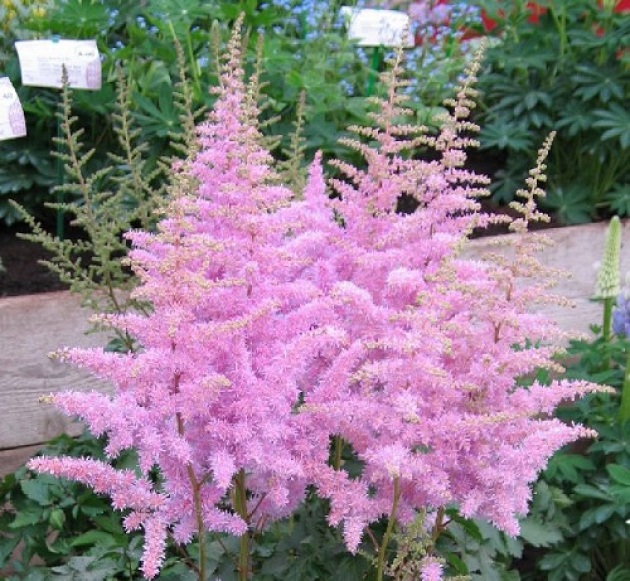
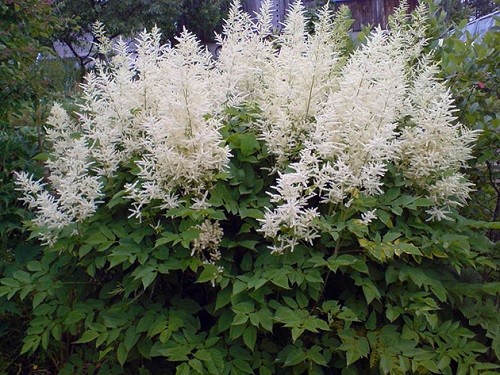

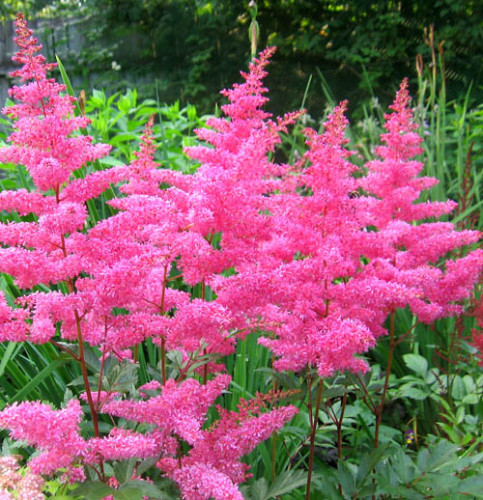
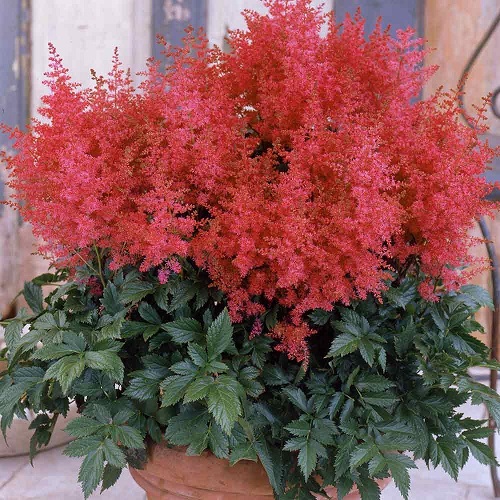
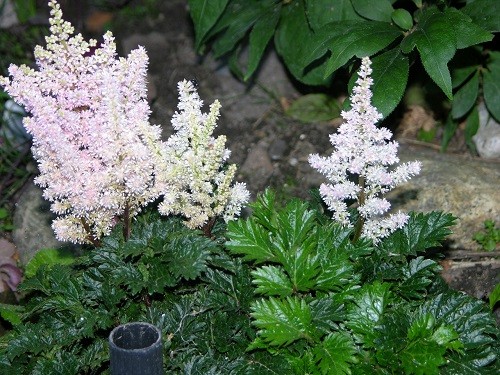
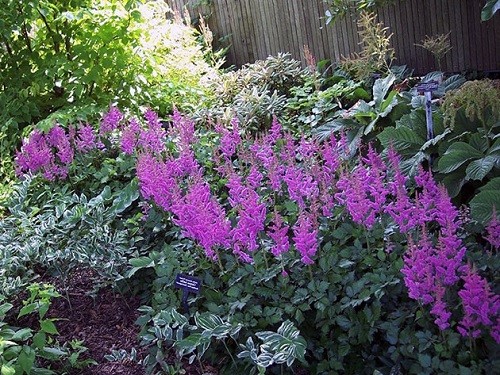
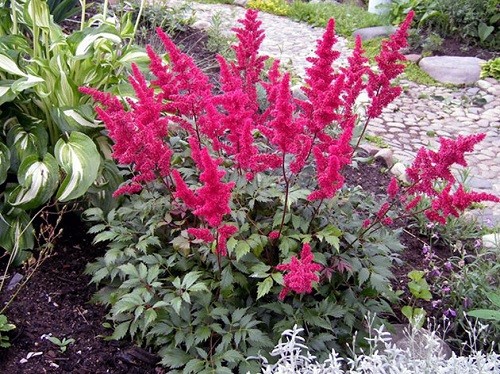
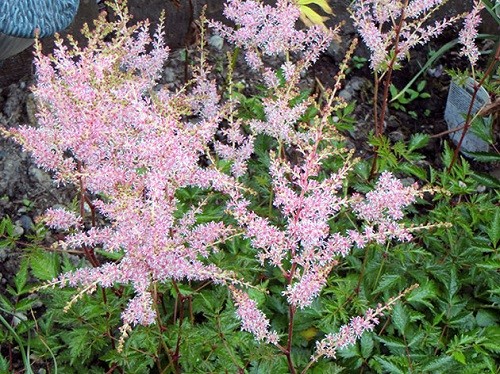
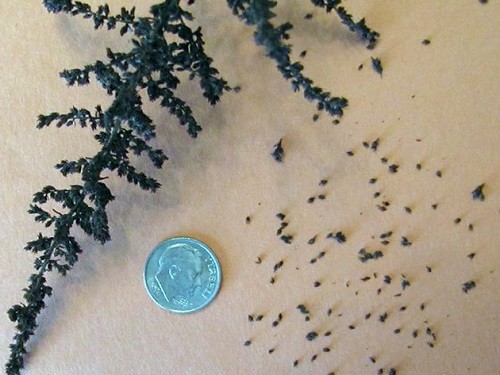
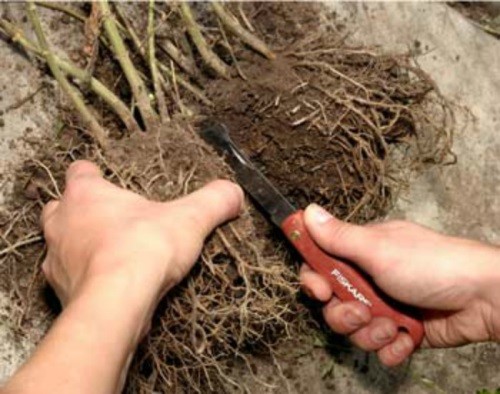
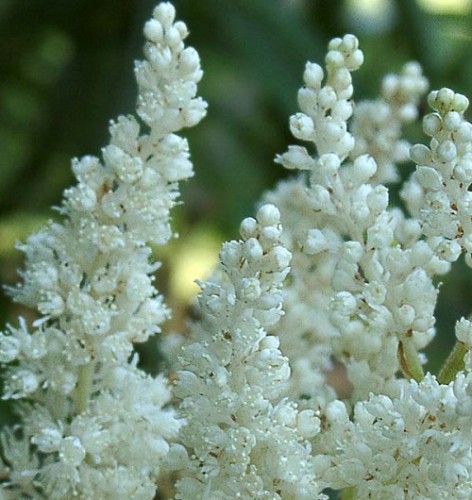
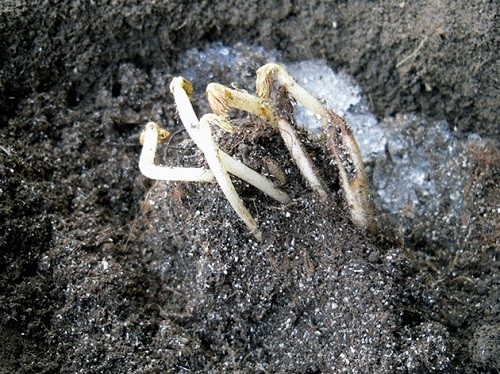
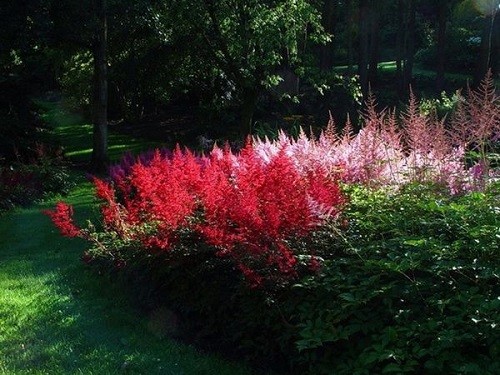
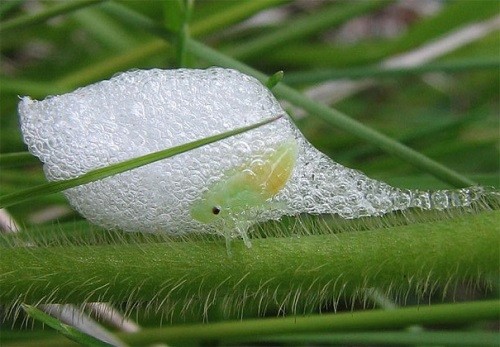
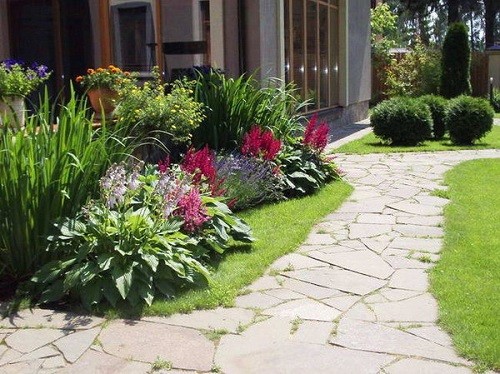
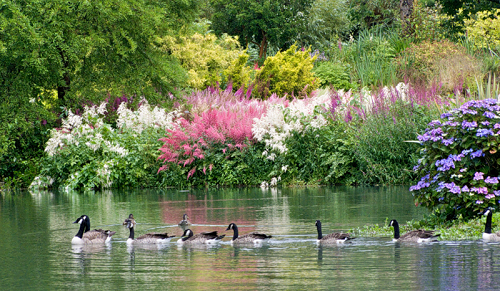
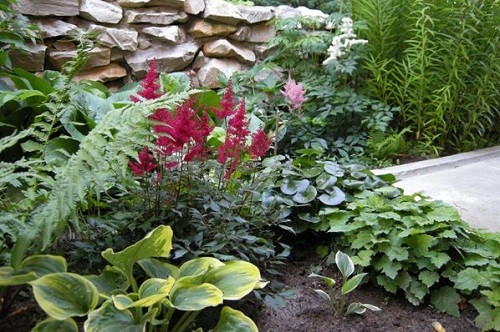
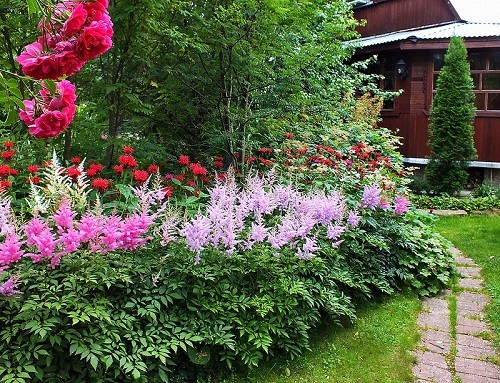
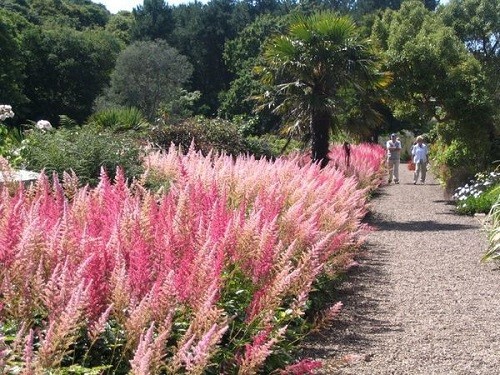
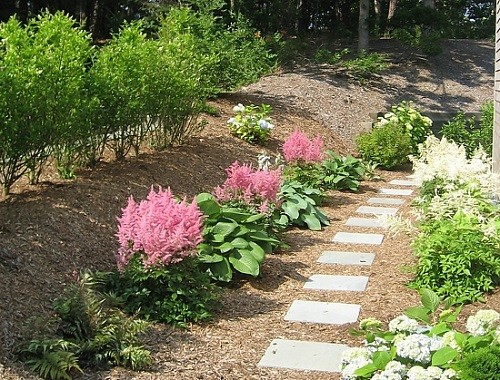












 Start a discussion ...
Start a discussion ...